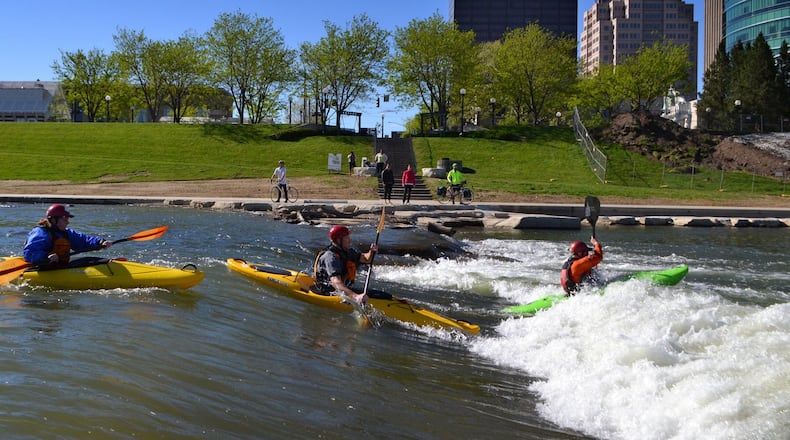“Years ago when I first began, communities often were still turning their backs over rivers, as rivers were still often polluted and inaccessible, adjacent to industrial areas and the like,” Alberts said. “However, during the past couple of decades, this trend has fortunately now been reversed and most river communities understand the value of this asset.”
The Great Miami Riverway is the corridor of cities and counties along the Great Miami River in southwest Ohio. It starts in Sidney, flows through Dayton, and stretches all the way to Hamilton County.
The riverway at this point includes more than 99 miles of paved trails and connected communities where residents and visitors can bike, surf the river, and be connected to downtowns.
Over $500 million in riverfront investments have been completed over the last 10 years in communities along the Great Miami Riverway.
Hundreds of leaders gathered Friday throughout the day for a summit at Carillon Park to learn about the state of the river and its future potential.
Alberts praised Miami Riverway communities’ proactive approach to building connections around the river, because sometimes communities are reactive and don’t have a good strategy.
“Unless access to the river is easy and convenient and, most importantly, welcoming, its potential will not be optimized,” he said.
Weyland Ventures has a number of projects in different stages around the Miami Riverway, from Dayton, to Piqua to Sidney.
Among their latest ventures is a plan in the works to transform the former Longfellow School, along lower Salem Avenue and just up from the riverfront. The proposal includes senior housing and performance space.
Alberts said smaller cities sometimes bemoan the fact that they don’t have the amenities to attract people that larger cities do, like concerts and museums. But these are infrequent events, compared to the amenities people want for their day-to-day lives.
“On the other hand, the ability any day, every day, to get home from work, and to easily and quickly get to the riverfront or grab a pizza in the square ... That’s a pretty powerful amenity to have,” he said.
Leaders for years have been coordinating to build up the value of the riverway. In 2008, leaders convened for a summit and formed a volunteer group to start conversations surrounding the Great Miami’s riverfront communities.
In 2014, the U.S. Army Corps of Engineers was commissioned to complete the largest river asset inventory they had ever taken on. The key result: creating a unified message to promote the wide variety and enormous wealth of assets found in this 99-mile corridor.
In 2017, 19 riverfront communities and organizations formed the Great Miami Riverway Coalition to implement the goals.
About the Author

